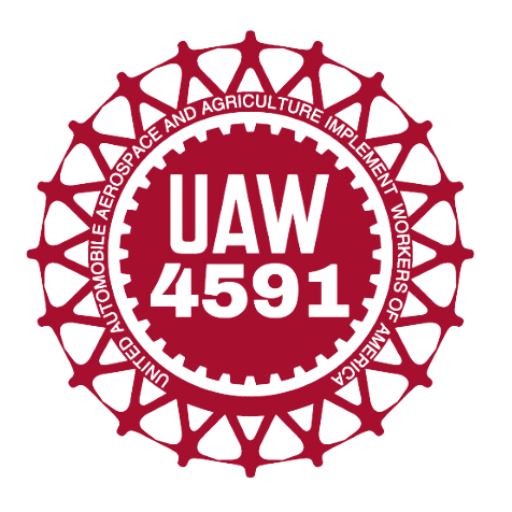Bargaining FAQs
Now that we’re certified as a union, we’re preparing to start negotiating with WSU admin to improve our wages, health care, and other aspects of our employment!
Your Title Goes Here
Your content goes here. Edit or remove this text inline or in the module Content settings. You can also style every aspect of this content in the module Design settings and even apply custom CSS to this text in the module Advanced settings.
What does a bargaining committee member do?
Members of the Bargaining Committee will use bargaining survey data, research, and information gathered through conversations with other ASEs to draft bargaining proposals, and present those proposals to admin. Equally important is the work that happens away from the table; communicating with other ASEs and building power to win our demands. Bargaining Committee members will also continue to communicate with their fellow ASEs about the progress of bargaining, and help organize majority actions like letter sign-ons and direct actions.
Everyone is encouraged to participate in any part of the process that they are interested in, regardless of whether you are a Bargaining Committee member! All Bargaining Committee meetings and bargaining sessions will be open to all ASEs.
How long will bargaining take?
We want to reach agreement on a strong first contract quickly so that we can improve working conditions for ASEs at WSU as soon as possible. We are proposing to have our first bargaining session in December 2022 and to then resume bargaining after the winter break. The total length of the process depends on how motivated the University administration is to meet with us, which usually reflects the level of mobilization among bargaining unit members. This is why bargaining committee members often spend most of their time organizing and communicating with members.
What is the time commitment for Bargaining Committee members?
The time commitment for the Committee is flexible, and anyone interested is encouraged to participate in whatever way they’re able. Plan to attend at least one hour-long Bargaining Committee meeting per week, and otherwise work on bargaining proposals, meet with WSU administration, and reach out to colleagues.
We will form separate working groups to work on developing proposals for specific topics (e.g. healthcare, wages, etc). Everyone is welcome to work on as many topics / projects as they have interest and capacity for! Often, members will pick one or two to focus on.
Finally, it’s possible that bargaining committee members could be provided release time from their assigned ASE duties (e.g. rather than attending office hours you attend a bargaining session with WSU Admin). We’ll discuss this more at our bargaining committee meetings so we can brainstorm proposals that work best for everyone and discuss practical considerations like talking to our advisors.
How does the bargaining committee draft proposals?
Committee members will review feedback from members (via surveys or conversations), as well as existing language (from ASE contracts at other Universities and University policy) in figuring out what to propose. Like with all aspects of this process, everyone is welcome to participate in drafting proposals regardless of whether they are a Bargaining Committee member.
We will likely form working groups to discuss particular topics (healthcare, wages, etc). They might then present their proposal drafts to the larger group for feedback and discussion. Once everyone has agreed on the general demands of the proposal, the working group will work with UAW staff/lawyers to finalize the proposal in contract language.
What happens during a bargaining session?
Everything in bargaining is subject to agreement between us and WSU admin. This means that we will have to figure out a lot of the details about logistics, what will happen in sessions, when sessions are scheduled, etc.
In general, both parties will present proposals to each other and will be required to respond to each other’s proposals in good faith to try and reach agreement. Typically, representatives from both sides will present and discuss proposals during bargaining. It is also common to spend part of a bargaining session away from management’s team in a caucus to discuss progress, work on counter proposals, etc.
Will Bargaining Committee members need to speak to WSU admin during bargaining?
Bargaining Committee members will be responsible for presenting proposals to WSU Admin. Typically, Bargaining Committee members will all work together to prepare talking points ahead of time; no one is expected to come up with proposals on the spot! UAW staff with experience negotiating contracts will also be there to help as legal/technical or strategic issues arise.
How does bargaining end?
After negotiating over each aspect of our potential contract, the Bargaining Committee will at some point determine that they feel they have reached agreement with WSU admin on how the contract should look. They will then submit this potential contract, called a tentative agreement, for a vote. If ASEs vote to approve the tentative agreement, it will become our new contract! If a majority of ASEs vote to reject it, the Bargaining Committee will return to negotiations.
What does being on the bargaining committee look like for students on distant campuses and extension centers?
Whether we bargain in person or virtually is subject to agreement with WSU admin. To make bargaining accessible for everyone regardless of campus or extension center, we plan to advocate strongly for bargaining to be done virtually.
Do bargaining committee members receive training?
Yes! We’ll be joined by experienced negotiators who will train everyone on the committee in how negotiations work: nuts and bolts of drafting and exchanging proposals, techniques and legal considerations, as well as strategies for building power away from bargaining (the most important part!).
